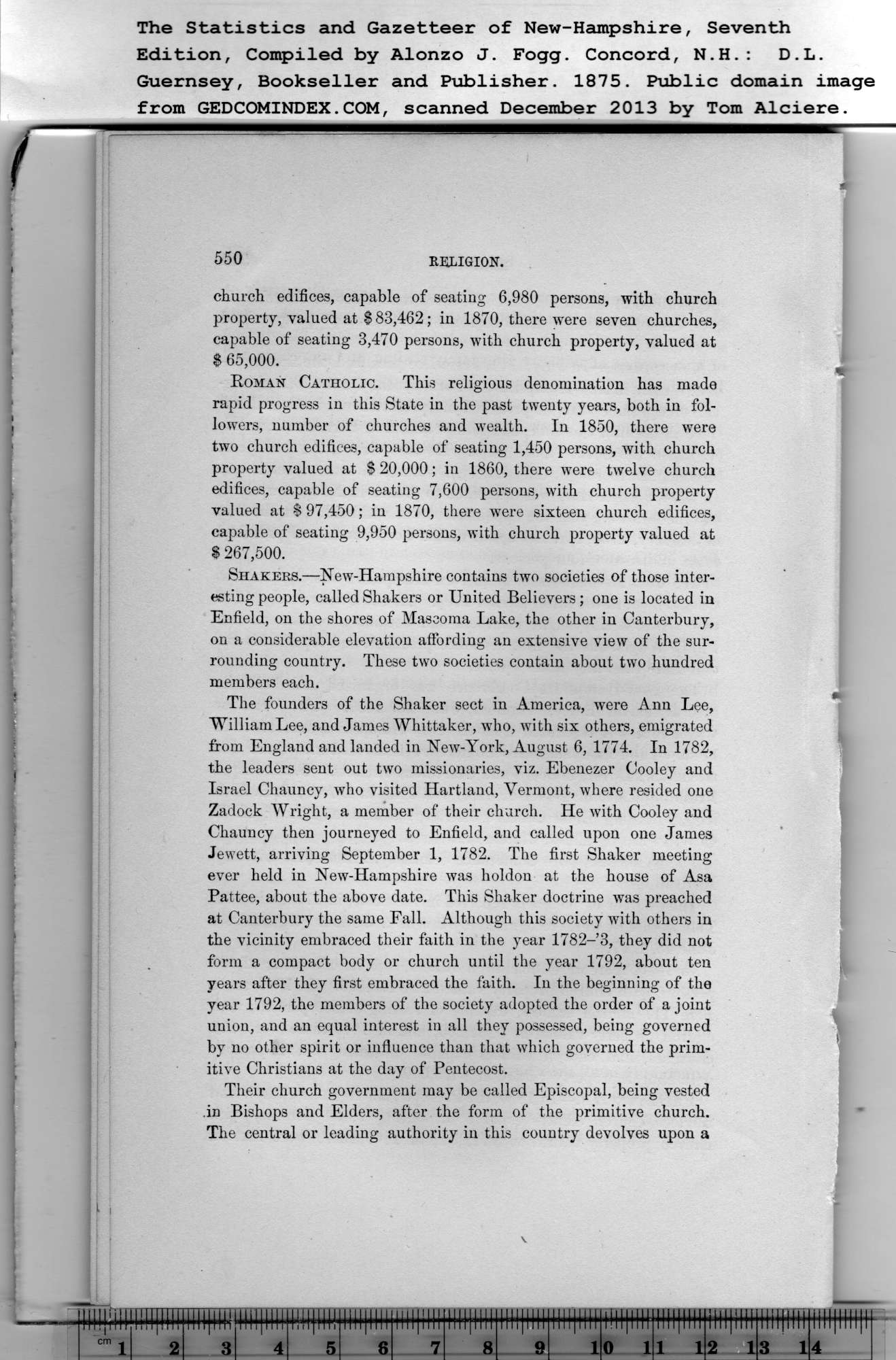|
*
550 RELIGION.
church edifices, capable of seating 6,980 persons, with church
property, valued at $83,462; in 1870, there were seven churches,
capable of seating 3,470 persons, with church property, valued at
$ 65,000.
Roman Catholic. This religious denomination has made
rapid progress in this State in the past twenty years, both in fol-
lowers, number of churches and wealth. In 1850, there were
two church edifices, capable of seating 1,450 persons, with church
property valued at $ 20,000; in 1860, there were twelve church
edifices, capable of seating 7,600 persons, with church property
valued at $97,450; in 1870, there were sixteen church edifices,
capable of seating 9,950 persons, with church property valued at
$ 267,500.
Shakers.—New-Hampshire contains two societies of those inter-
esting people, called Shakers or United Believers; one is located in
Enfield, on the shores of Maseoma Lake, the other in Canterbury,
on a considerable elevation affording an extensive view of the sur-
rounding country. These two societies contain about two hundred
members each.
The founders of the Shaker sect in America, were Ann Lee,
William Lee, and James Whittaker, who, with six others, emigrated
from England and landed in New-York, August 6, 1774. In 1782,
the leaders sent out two missionaries, viz. Ebenezer Cooley and
Israel Chauncy, who visited Hartland, Vermont, where resided one
Zadock Wright, a member of their church. He with Cooley and
Chauncy then journeyed to Enfield, and called upon one James
Jewett, arriving September 1, 1782. The first Shaker meeting
ever held in New-Hampshire was holdon at the house of Asa
Pattee, about the above date. This Shaker doctrine was preached
at Canterbury the same Fall. Although this society with others in
the vicinity embraced their faith in the year 1782-3, they did not
form a compact body or church until the year 1792, about ten
years after they first embraced the faith. In the beginning of the
year 1792, the members of the society adopted the order of a joint
union, and an equal interest in all they possessed, being governed
by no other spirit or influence than that which governed the prim-
itive Christians at the day of Pentecost.
Their church government may be called Episcopal, being vested
.in Bishops and Elders, after the form of the primitive church.
The central or leading authority in this country devolves upon a
PREVIOUS PAGE ... NEXT PAGE
This page was written in HTML using a program written in Python 3.2
|
